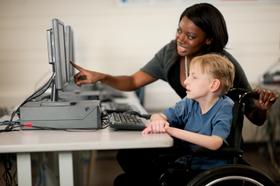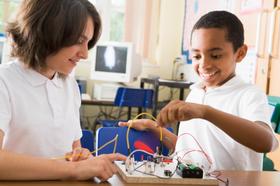Top Rankings
Burnt River SD 30j School District ranks among the top 20% of public school district in Oregon for:
Category
Attribute
Student Attention
Lowest student:teacher ratio (Top 1%)
For the 2025 school year, there is 1 public school serving 46 students in Burnt River SD 30j School District. This district's average testing ranking is 9/10, which is in the top 20% of public schools in Oregon.
Public School in Burnt River SD 30j School District have an average math proficiency score of 50% (versus the Oregon public school average of 31%), and reading proficiency score of 50% (versus the 44% statewide average).
Minority enrollment is 26% of the student body (majority Hispanic), which is less than the Oregon public school average of 42% (majority Hispanic).
Overview
This School District
This State (OR)
# Schools
1 School
1,302 Schools
# Students
46 Students
541,703 Students
# Teachers
4 Teachers
29,489 Teachers
Student : Teacher Ratio
12:1
12:1
Student By Grade
District Rank
Burnt River SD 30j School District, which is ranked within the top 20% of all 185 school districts in Oregon (based off of combined math and reading proficiency testing data) for the 2021-2022 school year.
The school district's graduation rate of 50% has decreased from PS% over five school years.
Overall District Rank
#128 out of 187 school districts
(Bottom 50%)
(Bottom 50%)
Math Test Scores (% Proficient)
(21-22)<50%
31%
Reading/Language Arts Test Scores (% Proficient)
<50%
44%
Graduation Rate
(20-21)≥50%
81%
Students by Ethnicity:
Diversity Score
0.44
0.60
% American Indian
n/a
1%
% Asian
9%
4%
% Hispanic
11%
26%
% Black
n/a
3%
% White
74%
58%
% Hawaiian
2%
1%
% Two or more races
4%
7%
All Ethnic Groups
District Revenue and Spending
Total Revenue
$2 MM
$9,902 MM
Spending
$1 MM
$10,468 MM
Revenue / Student (18-19)
$30,327
$15,425
Spending / Student (18-19)
$30,691
$14,517
Best Burnt River SD 30j School District Public Schools (2025)
School
(Math and Reading Proficiency)
(Math and Reading Proficiency)
Location
Grades
Students
Rank: #11.
Burnt River School
Charter School
(Math: <50% | Reading: <50%)
Rank:
Rank:
8/
Top 30%10
201 S 1st Ave
Unity, OR 97884
(541) 446-3336
Unity, OR 97884
(541) 446-3336
Grades: K-12
| 46 students
Frequently Asked Questions
How many schools belong to Burnt River SD 30j School District?
Burnt River SD 30j School District manages 1 public schools serving 46 students.
What is the rank of Burnt River SD 30j School District?
Burnt River SD 30j School District is ranked #21 out of 185 school districts in Oregon (top 20%) based off of combined math and reading proficiency testing data for the 2021-2022 school year. This district ranks in the top 20% of Oregon school districts for: Lowest student:teacher ratio (Top 1%)
What is the racial composition of students in Burnt River SD 30j School District?
74% of Burnt River SD 30j School District students are White, 11% of students are Hispanic, 9% of students are Asian, 4% of students are Two or more races, and 2% of students are Hawaiian.
What is the student/teacher ratio of Burnt River SD 30j School District?
Burnt River SD 30j School District has a student/teacher ratio of 12:1, which is lower than the Oregon state average of 18:1.
Recent Articles

The 15 Biggest Failures of the American Public Education System
The world is in a constant state of change and those who fail to adjust fall behind. Unfortunately, the American public education system has not kept up with the times and is currently facing a number of serious problems. Keep reading to learn about the biggest failures affecting the modern U.S. public education system as well as some of the trends that could spark change.

Florida Governor Calls for More Funding for State鈥檚 Public School System
Florida Governor Rick Scott has introduced a state budget for next year that pumps one billion more dollars into the public school system. We鈥檒l look at his reasons for the increase and the responses to the proposal.

Can Your Child鈥檚 School Meet the National Standards?
The article discusses the challenges public schools face in meeting national educational standards. It examines current performance trends, identifies key issues affecting student achievement, and explores potential solutions for improving academic outcomes across U.S. public schools.





